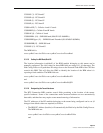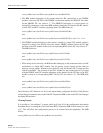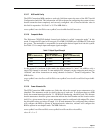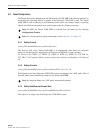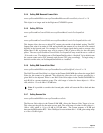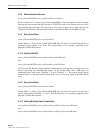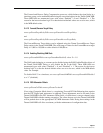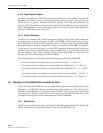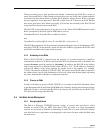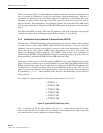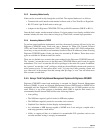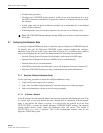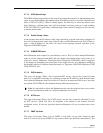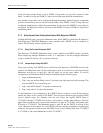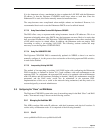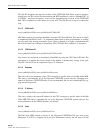
ADCP-75-192 • Issue 2 • June 2007
Page 33
© 2007, ADC Telecommunications, Inc.
Tenant processing uses a least-recently-used scheme to determine the RAN ID to assign to
newly discovered RANs. When Tenant processing discovers new RANs that contain hardware
associated with that tenant (based on Tenant ID of pathtrace string), the new RAN is assigned
the next sequential “never-been-used” RAN ID, a value from 1-8. If there are no RAN IDs that
have never been used, then Tenant processing will find the least-recently-used RAN ID and
assign that ID to the newly discovered RAN.
The RAN ID is important because it lets the user of the Tenant OAM MIB determine which
RAN corresponds to the RAN-specific MIB objects, such as:
TenantRanDisableX, TenantRanXForwardMeasuredGain
and
TenantRanForwardGainOffsetX where X is the RAN ID, a value from 1-8.
The RAN ID assignments will be persistently maintained through resets of the Hubmaster CPU
and other CPU/FICs in the network, which will allow the NMS to program the RAN IDs when
new RANs are added to the tenant simulcast group.
3.5.2 Bracketing of Lost RANs
When a RAN CPU/FIC is removed from the network, or if tenant processing is unable to
communicate with one of its RANs, then that RAN ID in the Hostname table is bracketed. For
example hostname would be reported as [hostname]. In addition, the RAN ID in the Address
table is also reported in a different fashion when a RAN is “lost”. The IP address is bracketed,
with the IP address string being replaced by another form of the number. For example,
172.20.1.248 could be replaced by [1921681.248]. The point is that if the IP address reported in
the Address table is not a valid combination of four octet values with decimal points separating
the octets, then that RAN should be considered not present.
3.5.3 Clearing of RANs
In order to facilitate swap outs of RAN CPU/FICs, it is possible for the RAN Hostname values
in the Hostname table of the Tenant OAM MIB to be cleared by deleting the hostname from the
MIB table. Doing so will allow that RAN ID to be cleared, and will allow the next RAN CPU/
FIC discovered to occupy that RAN ID.
3.6 Hub Node Access/Management
3.6.1 Managing Hub Nodes
The Hub in a Digivance CXD/NXD network consists of several racks and chassis, which
translate to several CPUs per HUB. Since these CPUs all reside at a single geographical
location, it is necessary to establish a relationship of each CPU to its rack and chassis location
such that field service personnel can be deployed to the correct location within the Hub when
the need arises.



